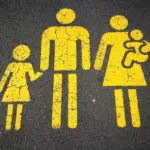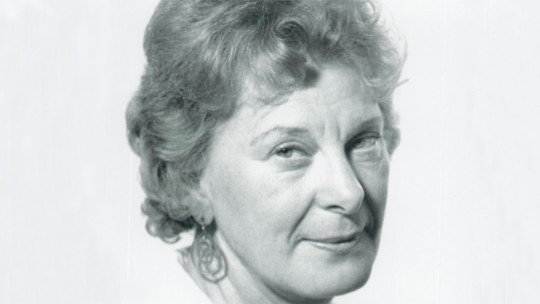
Intergenerational family therapy is a modality found within systemic family therapies. and its main objective is the treatment of interpersonal conflicts between members of a family when these conflicts have been seen to have occurred between various family generations.
In this article we will see what this type of family therapy consists of and the ideas and theoretical proposals from which it starts.
What is intergenerational family therapy?
Intergenerational family therapy is a psychological treatment, framed within systemic family therapies, which was developed in order to address various interpersonal conflicts between family members that have been inherited by predecessor generations of family members, so this conflict has remained within the family for many years. The most representative authors of this type of family intervention were the psychiatrists Ivan Boszormenyi-Nagy and Murray Bowen.
On the other hand, intergenerational family therapy, being a systemic model, is also used to analyze the configuration between family systems and the role of each family member within the system. Likewise, having been initially developed by psychoanalytically oriented psychiatrists, it is theoretically based on psychoanalysis, especially with regard to the mechanisms of projection in the family, in the process of differentiation of the self or in the individual need for change. , among others.
Vision of the person who has intergenerational family therapy
This systemic family approach is based on two ideas: that there is a transmission of emotional and behavioral patterns from generation to generation of family members, and the consideration of the family as the factor that determines individual autonomy of each of the members that make it up.
The first idea, about the transmission of behavioral and emotional patterns between generations of the family, comes from contextual therapy, the main precursor being Ivan Boszormenyi-Nagy, and is based on the consideration of the family as an emotional unit, being a in turn a network of interrelationships between its members that has been developing from generation to generation.
Therefore, it is important understand the influence of members of previous generations of the family in order to better understand the current family. And it is through these members of previous generations that emotional, cognitive and behavioral reaction patterns have been learned.

The second idea, regarding the consideration of the family as the determining factor of the autonomy of each of the members, whose main precursor is Murray Bowen, is based on the idea that each person has an internal debate between two forces. One is the “individuation force,” which focuses on developing one’s own identity and developing an independent life. The other is “bonding strength,” which is focused on maintaining a connection with other family members (e.g., parents, siblings, etc.).
Within this second idea, the key would be to achieve a balance between both forces, that of individuation and that of unionso that people have the ability to make thoughtful and coherent decisions, instead of reacting only emotionally to certain situations, without having previously reflected before acting.
Vision of the family from intergenerational family therapy
Notably For Bowen, the family is at first a “mass that is undifferentiated from the family ego.”, so it is made up of a group of individuals who live within the same emotional context in which an exchange of points of view, forms of behavior, emotional reactions, etc. takes place. Therefore, its members have jointly developed a network of expectations and needs that must be satisfied (for example, affection, loyalty, help, etc.).
One of the issues raised by intergenerational family therapy is that that undifferentiated mass that exists in the beginning in the family must gradually separate itselfso that each of its members achieves a psychological and emotional distance that allows them to make their own decisions autonomously and this is what has been called “differentiation of the self.”
Otherwise, a “fusion” will continue in which family members do not achieve autonomy and are trapped within the undifferentiated family mass, making it difficult for them to establish the limits that should exist with respect to other members and the identity of the members is dissolved within the family.
Therefore, from this perspective throughout the entire life cycle, people are within a continuous struggle to achieve a balance between attachment to family members and personal differentiation and autonomy.
The great and most common milestones that usually occur within a family throughout the process of “differentiation of the self” of the children are the following:
In the new undifferentiated mass It is common to use relationship patterns with their children that had previously been learned from their parents themselves.. The previous example would be a normal individuation process throughout the life cycle; However, this is not always the case, since unexpected crises may occur (for example, parental divorce, death of a member of the family unit, frequent changes of address, etc.).
Objectives of this type of therapy
According to intergenerational family therapy, the proposed idea of a healthy family should have the following characteristics.
1. The nuclear family
In the nuclear family, this being the one that is made up only of the parents and children without counting other family members, clear boundaries must be established between generations. Therefore, parents should have balanced expectations with respect to each of the children they have and, based on this, it should help in the correct development of the autonomy and identity of each child.
Likewise, each family member must have the ability to express affection in a non-possessive way toward other family members, as well as be open to interacting with other people (e.g., grandparents, cousins, uncles, friends , etc.) without affecting the union of the nuclear family.
- Related article: “Structural Family Therapy: what it is, characteristics and how it works”
2. Parents
Both the mother and the father should have developed a correct and healthy differentiation process from their family of origin, so It is normal that they have developed greater cohesion with the family they have created together than with their family of originwithout having lost affection towards their parents, siblings and other members of their family.
At the same time, it is important that the two parents, as a couple, have a mutual understanding through empathy and with clear expectations about the needs of their partner and also regarding the relationship between them, so that they can communicate. and resolve any problems that may arise effectively.
- You may be interested: “The 4 educational styles: how do you educate your children?”
3. The children
Each of the children should have developed the ability to express their affection openly and to communicate with their parents. without this implying a competition with their siblings and without it happening between the parents to show more closeness with one of them.
On the other hand, the union and affection that exists between the members of the family nucleus should not be an impediment for children to acquire a greater degree of autonomy as they grow older so that they can be independent one day and thus They can start their own family.
- Related article: “How to educate your children on limits?”
The family genogram and schedule
The family genogram is one of the main tools of intergenerational family therapy; It is used to collect graphic data about the family with whom the treatment is being carried out, collecting information from at least three generations.
This family genogram provides the psychotherapist with information about the family structure, as well as a series of sociodemographic information about its members (e.g., names, ages, and location, among others), as well as serving as a useful to have information about the relationships between family members (siblings, parents, cousins, grandparents, etc.). On the other hand, it makes it possible to clarify the connections between the past, the present and the family system as a whole.
This technique makes it possible to summarize a large amount of data about the family, which at the same time helps to develop a hypothesis about the relationship that could exist between the family context and the reason for seeking therapy.
To develop a family genogram, within intergenerational family therapy, the following steps must be followed:
- It begins by mapping out the structure of the entire family system.
- Fundamental information about that family is recorded.
- An outline of the different relationships that exist within the family system is made.
It is common to accompany the family genogram with a schedule that allows a chronological summary of the most relevant events in relation to the family that could be useful to develop the hypothesis about possible relationships between the events (for example, that the death of a child could coincide). family member with moments of crisis in the marriage relationship between two family members).








